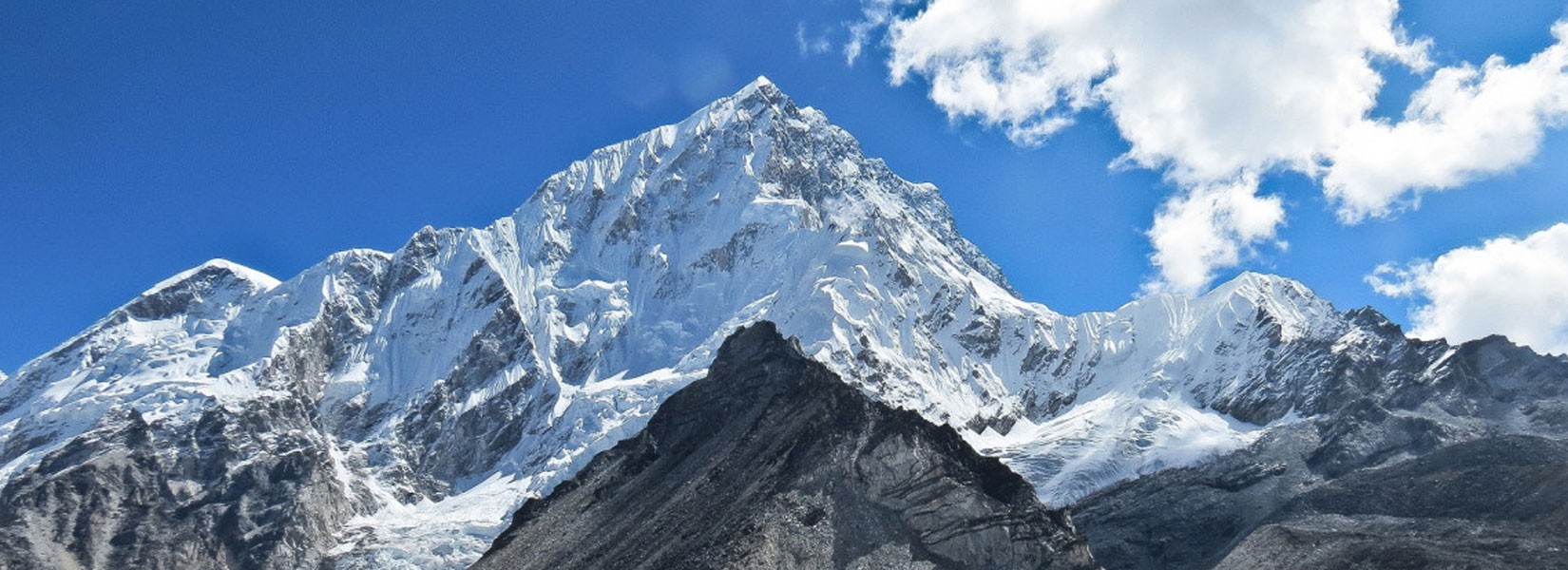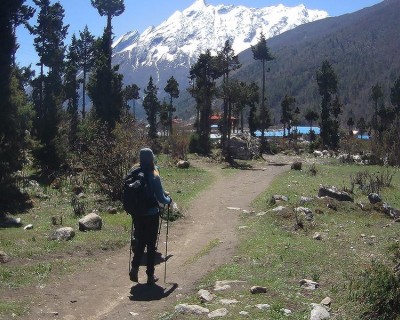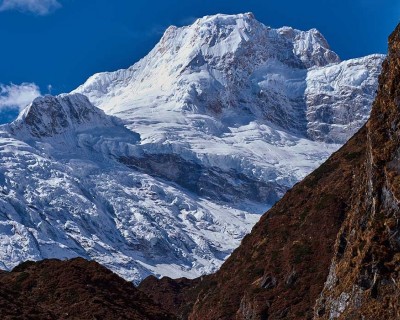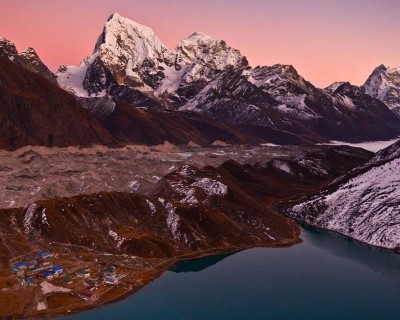Highlights of the expedition
Before getting into the trek's difficulties, let's know why the Everest Base Camp trek is worth all the problems. So here are the major highlights of the expedition:
- Views of the world's highest peaks, including Mount Everest, Lhotse, and Nuptse, are captivating.
- Trekking in the Sagarmatha National Park, a UNESCO World Heritage site known for its diverse flora and fauna.
- Passing through Sherpa villages and learning about their distinct culture and traditions
- Crossing raging rivers on suspension bridges and climbing steep mountain paths
- Arriving at Everest Base Camp, where climbers prepare for their ascent to the summit
- The well-known Tengboche Monastery is a Buddhist temple sitting on a hill with sweeping views of the mountains.
- Seeing the Khumbu Icefall, a hazardous section of the mountain that climbers must negotiate on their way to the top of the mountain
- The Everest View Hotel, the world's highest guesthouse, offers breathtaking views of the Himalayas.
- Physically and intellectually stimulating yourself and experiencing personal growth and fulfillment from completing this epic trek.
Why is the Everest Base Camp Trek Difficult?
.JPG)
Due to several factors, the Everest Base Camp trek primarily falls under the category of the most challenging trek in the world. This blog segment will clarify why this trek is considered a challenging trek.
Extreme Altitude
The high altitude of this trek is one of the most significant challenges for trekkers. The altitude increases rapidly as the expedition progresses, with the base camp sitting at 5,364 meters (17,598 feet) above sea level. The air pressure and oxygen levels are relatively low at such high altitudes, making it difficult for the body to function. This can result in altitude sickness, which can be dangerous if not treated. Trekkers must acclimate properly to avoid altitude sickness by taking frequent rest days, drinking plenty of liquid, and avoiding alcohol and caffeine. It is also critical to be aware of altitude sickness symptoms such as headaches, nausea, and dizziness and to devolve immediately if these symptoms appear.
Weather Conditions
The weather in the Everest region is notoriously unpredictable and rapid changes. Trekkers can anticipate snow, rain, wind, and high heat during the backpacking season, which lasts from September to May. The cold temperatures at night can make napping difficult, and snow and ice can make trekking paths slippery and scary. Bring warm, waterproof clothing and high-quality trekking boots to be prepared for all weather conditions. Trekkers should also be ready to change their itinerary if the conditions worsen.
Steep Ascents
The trek to Everest Base Camp contains many steep climbs and descents, — particularly as you get closer to base camp. These steep paths can be physically demanding and require considerable fitness and resilience. The altitude can also make breathing hard, adding to the complexity. Regular physical exercises, such as hiking, jogging, or cycling, are suggested to enhance cardio and leg strength to prepare for the trek. It's also critical to take frequent breaks and to listen to your body, slowing down or relaxing as needed.
Long Journey
The trek to Everest Base Camp is approximately 130 kilometers (80 miles) round trip. This is a long distance, particularly considering the altitude and challenging terrain. Trekkers must be willing to walk for 6-8 hours per day, often with little remaining portion. It's critical to engage in regular physical activity to build aerobic capacity and to break in your trekking boots well before the trip to make preparations for the excellent range. Pacing yourself is also essential, as attempting to push yourself too hard too soon can result in injury or tiredness. Standard Kathmandu to Kathmandu itinerary is 12 days. However, you can customize
Lodging
The Everest Base Camp trek has basic amenities, with many backpackers in tea houses. Trekkers should predict dormitory-style rooms with other trekkers. It is vital to bring a warm sleeping bag and be prepared for basic facilities when preparing for the accommodation. Trekkers should also respect the tea house owners' traditions and follow their regulations and instructions.
Geographical Distinction
The Everest Base Camp trek is situated in a remote region of Nepal, far from modern amenities and medical facilities. Evacuation in an emergency can be costly and challenging. Trekkers must be self-sufficient and told to prepare for any eventuality. Bring a well-stocked first aid kit and any necessary medication to prepare for the remote location. Trekkers should also have a good compass and map and the capacity to find their way without using technology.
Cultural Differences
The Sherpa people live in the Everest region, with distinct lifestyles and cultures. Trekkers must respect their oral customs and be willing to adapt to their lifestyles. When visiting temples or other religious sites, it's important to dress conservatively and cover your shoulders and legs. It is also critical to honor the Sherpa way of life, intimately connected to the environment. Trekkers should avoid littering and be aware of the local flora and fauna. Understanding and respecting different cultures can enrich the expertise. Still, it can be difficult for trekkers to be mindful of this lifestyle.
In summary, the Everest Base Camp trek is considered difficult due to various factors such as high elevation, burdensome weather requirements, steep inclines, long distances, basic accommodations, remote location, and cultural barriers.
However, with proper preparation, mentoring, and a positive attitude, these barriers can be overcome, and the trek completed. The sense of accomplishment, combined with the breathtaking beauty of the Everest region, makes this trek a once-in-a-lifetime experience well worth the trouble.
Impact of Weather on the Difficulty of the trek
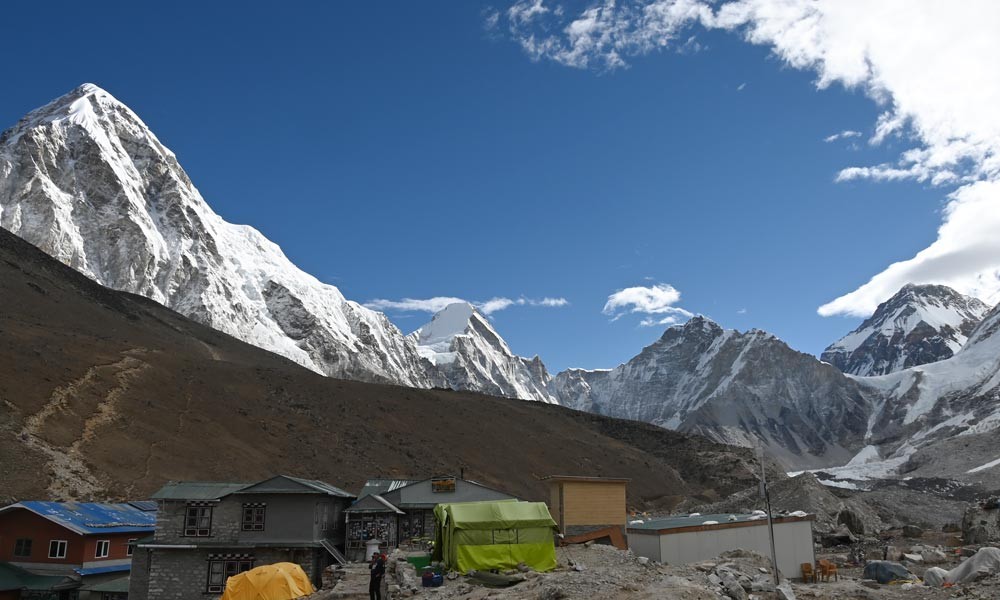
The Everest Base Camp trek's difficulty can significantly influence weather conditions. Here are some examples of how climate can impact the journey:
Temperature
Depending on the season, temperature changes in the Everest region can vary greatly. Temperatures can drop below freezing at night during the winter months (December to February), making it very hard to stay warm and comfortable. Temperatures can be warm during the day during the summer months (June to August). Still, weekends can be chilly, particularly at higher elevations. Temperature extremes make walking difficult for long periods and raise the risk of frostbite and other cold-related diseases.
Precipitation
Rain and snow are common in the Everest region. Heavy rain can make the trails muddy and slippery, making walking more difficult. Snow can also make the course more difficult, mainly if it is profound or starting to fall heavily. Furthermore, excess snow or ice on the trail is dangerous, especially if hikers must be adequately equipped with crampons or other traction equipment.
Wind
Wind can significantly affect the Everest region, particularly at higher elevations. Strong gusts of wind can make hiking difficult and even dangerous. High winds can make staying warm difficult because they quickly chill the body.
Visibility
Poor visibility due to fog or clouds can make it hard to see the trail. It can also be bewildering, making skills that enable more difficult. When hiking on steep or rugged terrain, this can be incredibly harmful.
Weather conditions can significantly impact the difficulties involved in the Everest Base Camp trek. Hikers should be prepared for weather conditions and plan accordingly, bringing appropriate footwear and clothing to deal with the elements. It is also critical to heed weather forecasts and, if necessary, modify the plan to ensure safety.
How to Overcome the Difficulty?
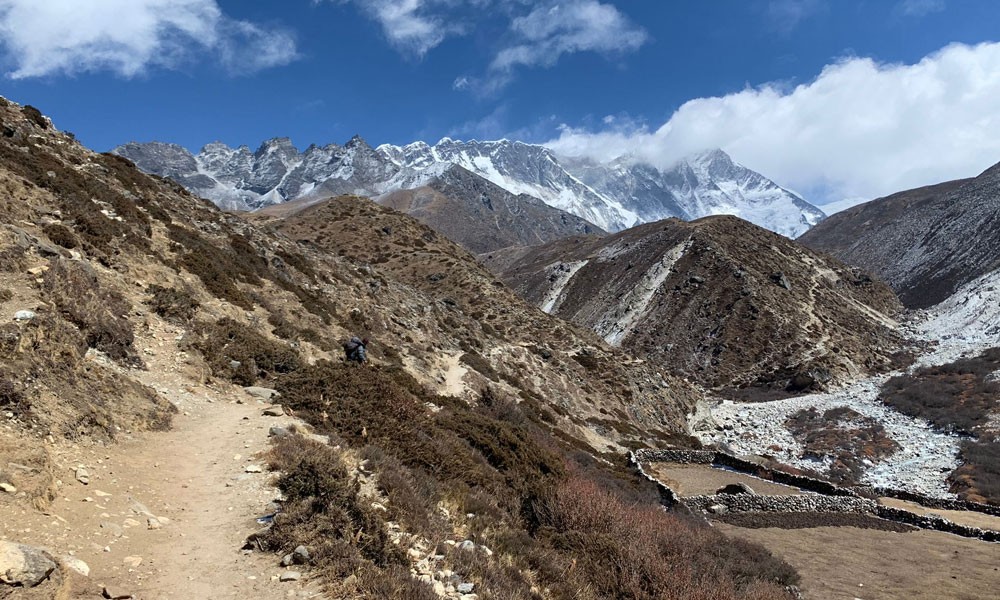
Trekking to Everest Base Camp is an incredible adventure, but it's also physically and mentally demanding. Even the most experienced trekkers can find problems due to the high flight level, adverse weather, steep hills, and remote location. However, with adequate preparation and a positive attitude, conquering these obstacles and having a once-in-a-lifetime adventure is possible. Here are five critical tips for overcoming the challenges of the Everest Base Camp trek:
Train and acclimate properly.
The Everest Base Camp trek is a demanding physical challenge, and training well in advance is crucial to guarantee you are physically ready for the hike. A well-rounded learning program includes cardiovascular training, endurance building, and strength exercises. Furthermore, proper acclimatization is vital for avoiding altitude sickness, which can be fatal. Stay at least two nights at each altitude level to allow your body to modify to the lesser oxygen levels.
Prepare for the weather
The weather in the Everest region can be unpredictable and harsh, with temperatures ranging from sunny and hot to below freezing. Bring suitable attire to defend yourself from the elements, such as a waterproof jacket, layers of warm clothing, and sturdy hiking boots. Bring sun protection, such as sunscreen, sunglasses, and a hat is also necessary.
Pace yourself
The Everest Base Camp trek is a long and challenging journey, and it's critical to keep your energy levels up to avoid burnout or injury. Take frequent breaks to allow your body to rest, drink lots of water, and refuel. Don't rush to your desired location to avoid overexertion; listen to your body's messages. Always keep in mind that the trip is as important as the location.
Embrace the local culture
The Everest area belongs to a distinctive and fascinating culture, and training about the local traditions and customs can add an extra dimension to your trek. Respect the locals and their lifestyle, and seize the chance to sample unfamiliar foods and traditions.
Stay positive and focused
The trek to Everest Base Camp is a physically and mentally demanding journey. It is critical to keep your spirits up and focus throughout the trip, even when facing obstacles or setbacks. Recollect why you started this journey, and draw strength from the natural beauty and majesty around you. Keep an upbeat mindset and view each challenging problem as a chance to learn and grow.
Trekking to Everest Base Camp is a challenging yet satisfying experience involving planning, perseverance, and a good outlook. You can overcome the trek's hurdles and experience the astonishing beauty of the Everest region by having trained correctly, acclimatizing properly, being prepared for the weather, pacing yourself, embracing the local culture, and remaining optimistic and laser-focused.
Mental Preparations for the Trek
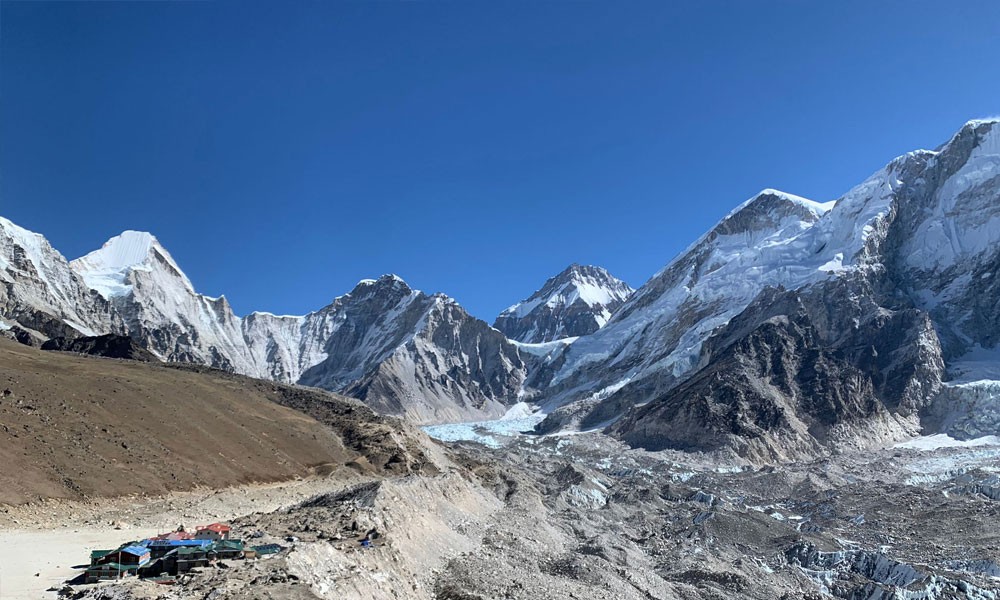
The Everest Base Camp trek is physically demanding and mentally challenging. The journey takes you to higher elevations, where the air is thin and the landscape is rugged, making it a cardiovascular endurance test. At the same time, the trek necessitates mental grit and resilience to handle the mountain environment's physical demands and unpredictable nature.
Here are some pointers for trying to navigate the mental demands of the Everest Base Camp trek:
Strong Mentality
Completing the Everest Base Camp trek includes a strong mentality. The walk requires a lot of mental resilience. It is critical to mentally prepare yourself for the difficulties you'll encounter on the expedition. Visualize completing the trek skillfully, and start preparing yourself for the problems you will face.
Keep a Positive Attitude
It is critical to stay upbeat while on the trek. Maintaining a positive attitude can assist with navigating the trek's psychiatric problems and motivate you to proceed on your trip.
Stay Connected
Keeping in touch with fellow travelers can help you stay motivated and positive. Sharing your tales and difficulties with others can make you feel less lonely and overcome the trek's mental challenges.
Accept Your Limitations
When trekking to Everest Base Camp, it is essential to accept your restrictions. This can be difficult because the trek requires considerable mental and physical endurance. Taking your limitations, on the other hand, can assist you in remaining inspired and conquering the trek's cognitive difficulties.
Basic First Aid Tips
The Everest Base Camp is a complex and physically demanding trek, and it is critical to be geared up for any medical situation. Here are some essential first-aid tips to keep you sound and secure while hiking:
Acclimate properly
Hikers in the Everest region frequently encounter altitude sickness. To avoid altitude sickness, acclimate properly by ascending slowly and giving your body enough opportunity to get used to the altitude. Suppose you have a headache, nausea, dizziness, or shortness of breath. In that case, you should rest and devolve to a lower altitude.
Stay hydrated
Dehydration is a frequent issue on the trek, especially at high altitudes. To stay hydrated, drink plenty of fluids, particularly water. Avoid alcohol and caffeine, which can decrease the water level in your body.
Sun protection
At high altitudes, the sun's rays are more potent and, therefore, can cause sunburns and other skin problems. Wear sunscreen with a high SPF, a hat, and sunglasses to protect your face and eyes from the sun.
Treat blisters
Blisters are frequent on the trek, particularly if you wear designer or ill-fitting shoes. To treat blisters, wash the affected area with soap and water and apply gauze or moleskin to reduce friction.
How does Marvel Adventure Help?
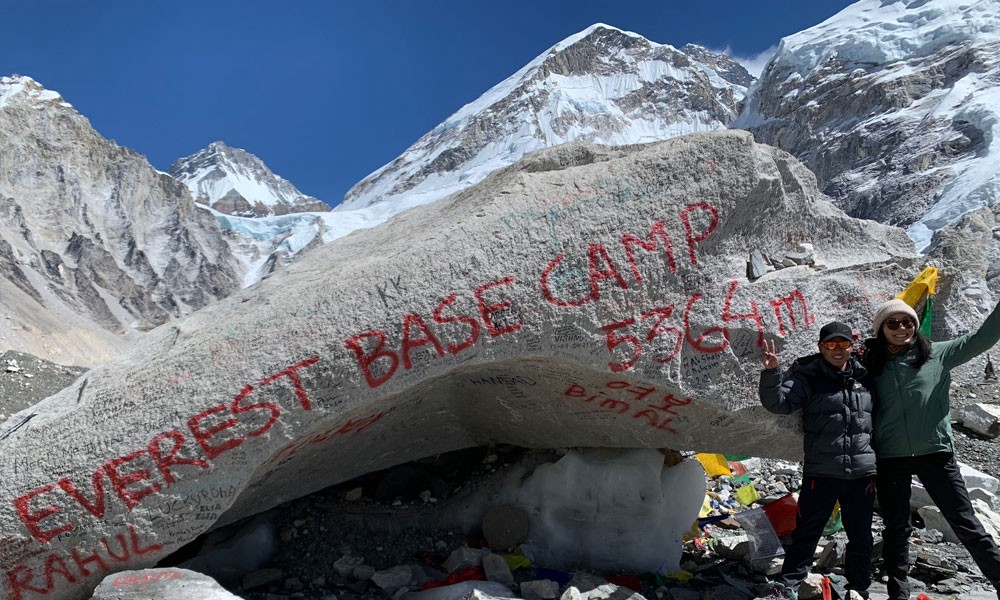
Marvel Adventures is a trekking business specializing in guided treks to Everest Base Camp and other popular Nepalese tourist attractions. The agency is critical in trying to aid climbers in overcoming issues experienced during the walk. Marvel Adventures can help climbers in the following ways:
Experienced Guides
Marvel Adventures acquires an outstanding team and provides experienced and knowledgeable guides with deep experience of the Everest region. These guides are competent in handling any situation that may crop up during the trek and have the skills needed to assist climbers in trying to overcome any difficulties they may encounter. Climbers benefit from the guides' knowledge of the terrain, weather conditions, and local traditions.
Proper Planning
Marvel Adventures provides a detailed itinerary for climbers to acclimate to the altitude and avoid altitude sickness. It includes rest days. Marvel Adventures also provides proper equipment, such as warm clothing and high-quality trekking gear, to ensure that climbers are ready for adverse weather.
Safety
Marvel Adventures takes precedence over safety. The agency ensures that all cavers have the necessary safety gear, such as oxygen tanks, first-aid kits, and emergency communication equipment. The guides have been educated to cope with emergencies and provide first aid and other medical assistance if necessary.
Accommodation and food
Marvel Adventures provides climbers with comfortable and clean lodging during the trek. The act ensures that the accommodations are situated in the most scenic and convenient locations and that the food is nutritious and delicious. The authority also facilitates climbers' special dietary needs.
Cultural Sensitivity
The Everest region has a separate identity, and Marvel Adventures makes confident that climbers respect the traditions and customs of the area. The agency offers cultural training programs to ensure trekkers understand regional businesses and courteously interact with locals.
Some more things to know about EBC
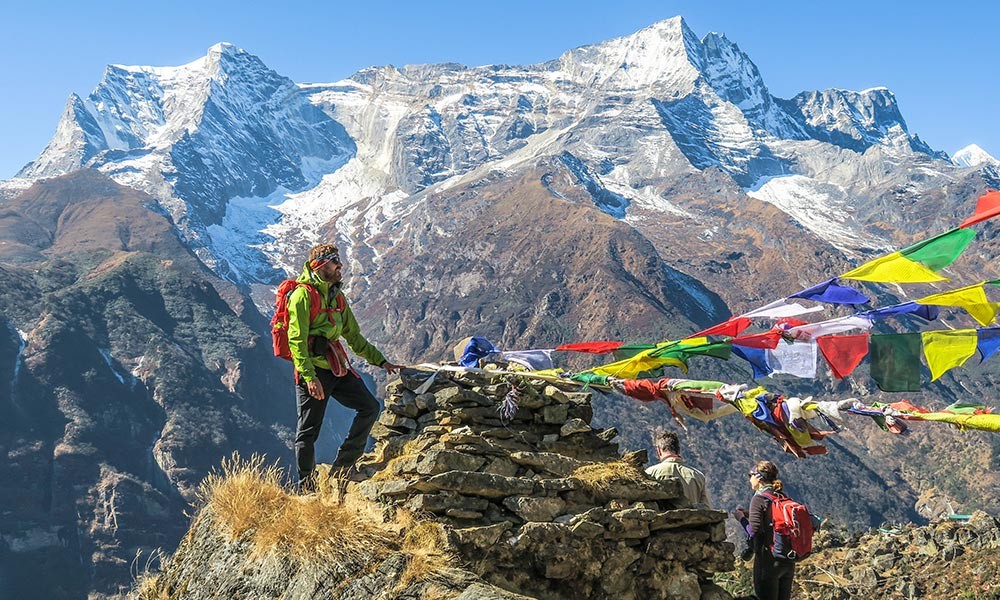
The Everest Base Camp trek is famous for more than just its stunning views and rugged terrain but also its rich biodiversity and one-of-a-kind wildlife. A wide variety of flora and fauna, with several endangered animals, can be found in the region. The following represent a few highlights of the Everest Base Camp trek's wildlife and biodiversity:
Flora
Rhododendron forests, Juniper trees, and mountain greenery abound in the Everest region. The region is also known for its medicinal herbs, such as Yarsagumba, a rare herb treasured for its medicinal properties.
Fauna
The region has several animal species, including the Snow Leopard, Himalayan Musk Deer, Himalayan Black Bear, and Red Panda. The snow leopard is one of the planet's most elusive and critically endangered, with only about 4,000 surviving in the wild. Because of the loss of habitat and poaching for its musk gland, a component of traditional Chinese medicine, the musk deer is also nearly extinct.
Birdlife
The Everest region is a birdwatcher's heaven with over 200 bird species, including many endangered species such as the Himalayan monal, Snow egret, and Yellow-billed chough. The Bar-headed goose, the world's highest-altitude bird, can fly over the Himalayas during its annual migration.
Conservation Efforts
The Everest region's unique biodiversity has prompted several conservation attempts to safeguard the local flora and fauna. The 1,148-square-kilometer-large Sagarmatha National Park was established in 1976 to help shield the Everest region's mineral resources. Several threatened species live in the park, and conservation efforts have proved to be successful in increasing the populations of certain of these species.
Ecotourism
Ecotourism has become an increasingly common form of tourism in the Everest region. Several trekking companies encourage sustainable tourism practices. These practices include lessening trekking's environmental impact, assisting local communities, and sustaining tourism. Ecotourism contributes to preserving local biodiversity and benefits local communities financially.
You may also like:
FAQs
How to maintain physical well-being during the EBC trek?
Ans. The best way to maintain physical well-being during the EBC trek is by taking proper acclimatization breaks throughout the trek and training adequately before the journey.
What is the total round trip distance of the Everest Base Camp trek?
Ans. The total round trip distance of the Everest Base Camp is 80 miles or 130 kilometers.
Is it safe to attempt the EBC trek without a professional guide?
Ans. No, it is impossible to do so because the Nepal Tourism Board has banned solo trekking, and the Board will not be issuing any permits for solo trekkers without the assistance of a professional guide as it is concerned for the safety of the tourists and trekkers.
You may also like:
Final Thoughts on the Trek’s Difficulties
The Everest Base Camp Trek is an undisputedly challenging excursion that pushes you to your mental and physical limits. There are countless obstacles to overcome on this trek, ranging from steep climbs to unpredictable weather conditions. The rewards, however, are incredible for those willing to face the task.
Reaching the peak of the world's highest mountain is a once-in-a-lifetime experience that will leave you amazed and accomplished. The stunning views of the surrounding Himalayan peaks and glacial lakes make the long, arduous trek worthwhile.
As you travel through the Sherpa villages and meet the locals, you will gain an appreciation for their distinct lifestyle and way of life. The journey allows for personal growth and self-discovery, and many hikers report feeling a sense of inner peace and satisfaction after completing it.
While the Everest Base Camp Trek is a challenging and complex adventure, it is also an unforgettable experience. It's an opportunity to push yourself to new limits, explore a beautiful part of the world, and make memories that will endure a lifetime.


